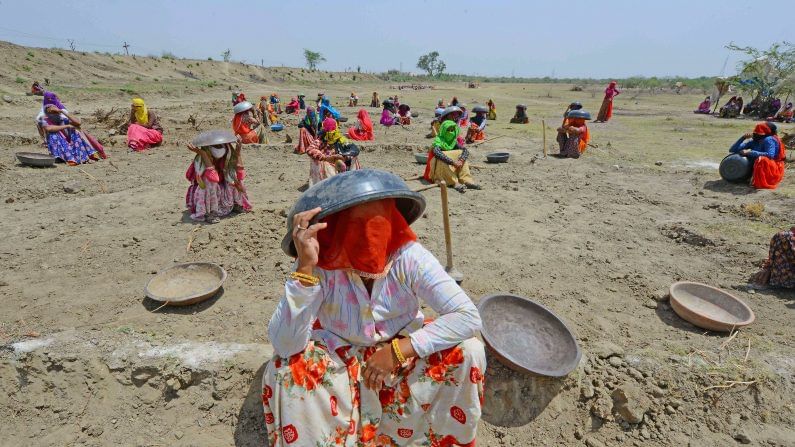Covid-19 second wave may result in more MGNREGA funding, says experts
The increased demand for the rural job guarantee scheme is a reflection of the ground reality that a large number of migrant labourers had to return to their home states after restrictive conditions were imposed in a number of states

The huge demand for MGNREGA jobs in April and the increasing number of states opting for partial lockdowns is triggering apprehension that the Centre might have to increase allocation to the MGNREGA programme in FY22 in addition to the budgeted Rs 73,000 crore as it did last year.
In a recent report, State Bank of India has stated that in April the demand for MGNREGA work rose to 2.57 crore households which is 95% higher compared to the numbers in April 2020. It also marks the highest demand for the month of April since 2013.
Reverse migration
“This indicates the extent of reverse migration from the lockdown states to their native states,” wrote SBI group chief economic advisor Soumya Kanti Ghosh in the report.
The MGNREGA allocation has been an interesting indicator of the need for public spending in a lockdown.
In the Budget estimates of 2020-21, the Union government proposed an expenditure of Rs 61,500 crore. Eventually after the pandemic triggered the lockdown and loss of jobs to millions, the government had to revise the allocation to Rs 1.11 lakh crore to tackle the rising demand of jobs in the rural sector.
After initial signs of the economy coming back to life again in FY22, the Centre allocated Rs 73,000 – an 18.7% hike compared to FY21 – to the rural job guarantee project.
However, after the MGNREGA figures of April emerging in the public domain, bureaucrats and experts think Union finance minister Nirmala Sitharaman might have to increase the allocation again this year.
“It is almost a certainty that allocation to MGNREGA has to increase beyond the budgeted amount. But the question remains, where will the money come from?” remarked Mahananda Kanjilal, professor of economics at a Kolkata college.
Said a bureaucrat in the agriculture department of the West Bengal government, “It is obvious that the restrictions in different cities are going to increase making it more difficult for the labourers in different unorganised sectors to continue working. They have either returned to their home state or will return. In order to provide them some employment opportunity, the MGNREGA wallet has to be opened.”
Where’s the money?
“It might seem that Rs 73,000 crore is insufficient but then one has to take a holistic view. If the government is undertaking other relief measures like supply of foodgrains for free, then dependence on MGNREGA might be to a lesser extent,” said Renita D’Souza, research fellow at Observer Research Foundation, a Delhi-based think tank.
Both D’Souza and Kanjilal said that MGNREGA is only a stop gap and the government can use it as a short term measure to prevent people from sliding into abject poverty.
“Moreover, where is the money for the government to allocate to MGNREGA?” asked both Kanjilal and D’Souza.
Other schemes
“One also has to take into account whether the infection is spreading in the rural areas. If it does, MGNREGA may not be the best option,” remarked D’Souza. She also pointed out that one has to see if the government has made provisions for increasing employment in the rural sector under other programmes. If they did, the dependence on MGNREGA would perhaps go down.
The advantage of MGNREGA is that it can be quickly administered.
Economists also pointed out that the wages – Rs 202 per head per day – is not sufficient to take care of oneself in an age when one might have to make provisions for medical expenses.
In fact, the number of people seeking MGNREGA jobs rose from 34.2 million in January to 38.3 million in February – a rise of almost 12%. The February figure is a whopping 32.5% higher than the demand of 28.9 million in November 2020 which was a festive season.